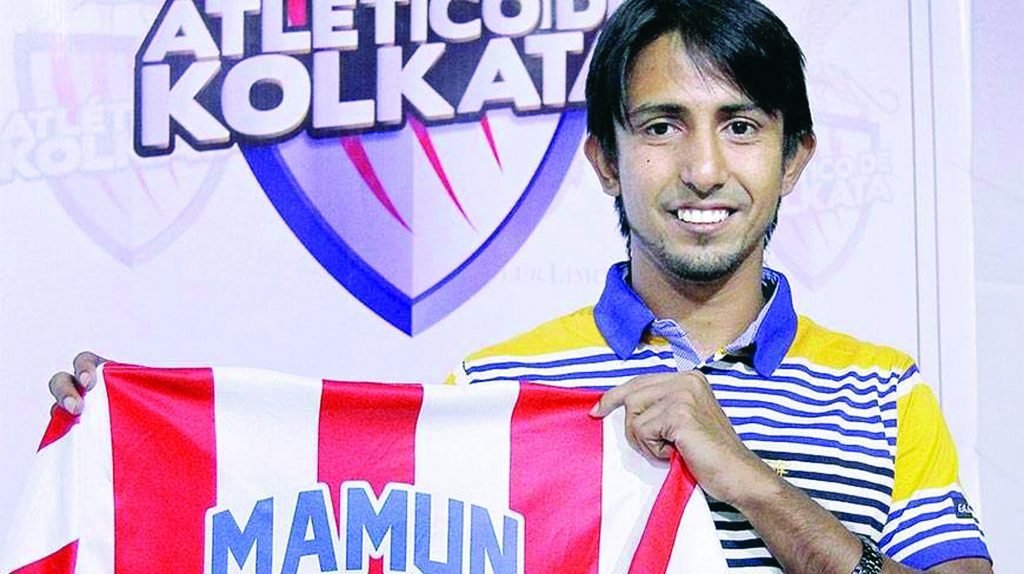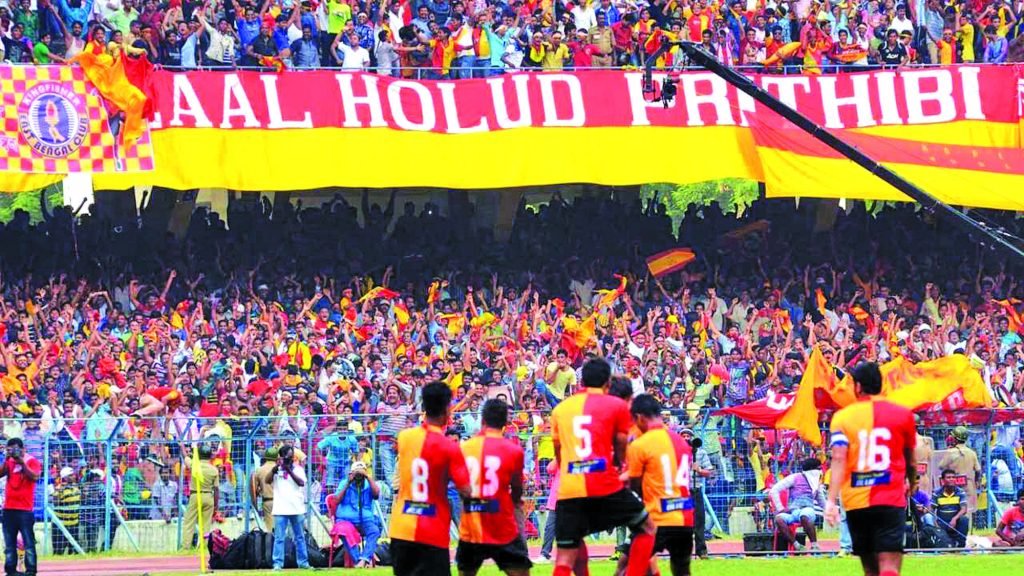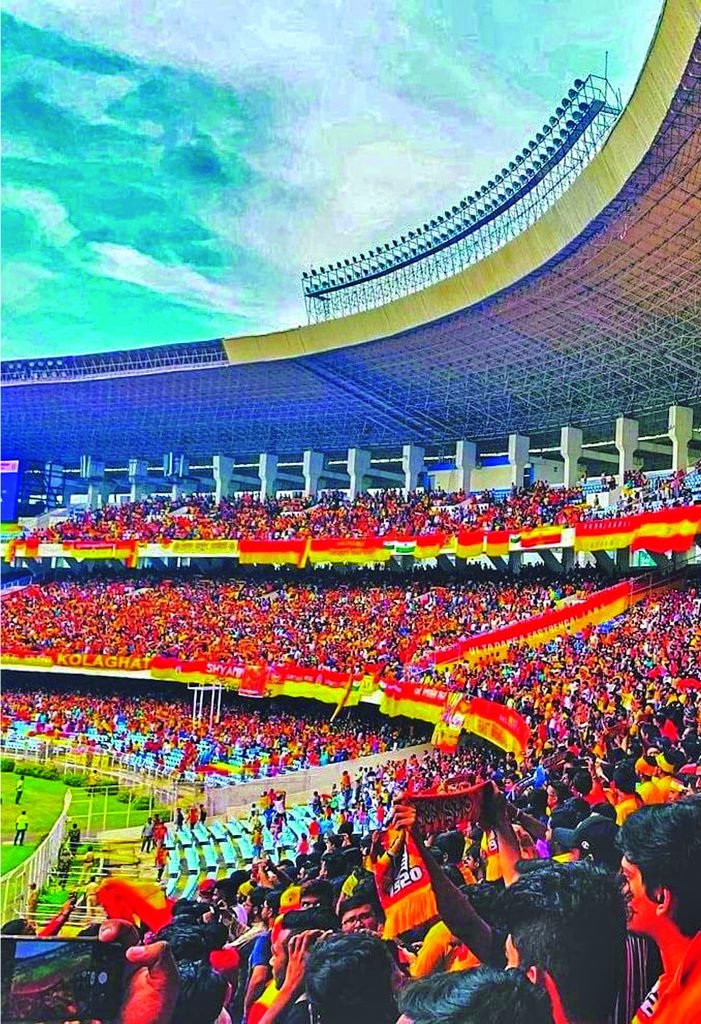Bangladesh is reaching astounding heights in the development world, but there is one field where the goal is not being scored. The country is ranked 186 out of 210 registered members of FIFA’s football playing nations. Bangladesh’s impoverished football business model compared to other countries’ club football business model including Indian Super League affecting our national football. 1980s and 1990s were the glory days of Bangladesh football. At one point, Bangladesh reached 110 in world ranking and was deemed as an upcoming Asian power. A match between Abahani and Mohammedan used to draw crowds of 60 thousands in a jam-packed Bangabandhu National Stadium. Salahuddin, Aslam, Chunnu. Monem Munna, Sabbir were the rock stars of their time. We can get into the nostalgic gloom and ponder hours and days into what went wrong. But maybe the barrier is into something fundamental, which is for obvious reasons, our football business model.
Franchise-based league in neighboring India has become a huge success financially and technically. Indian Super League is broadcasted over 200 countries and reached 429 million views in its first season. On the other hand, BFF has struggled to convince clubs to evolve as professional business models. It is high time for BFF to come up with a full proof plan like AIFF to enrich franchise-based league, which can be a sustainable game changer for Bangladesh football, writes Mir Arman Faruk
The world of professional football business is now worth around 600 billion dollars. Clubs like Real Madrid or Manchester City have yearly financial exchanges that might compare to a small nation’s fiscal budget. In the latest winter transfer window of 2021 season, top four leagues from Europe had transfer deals worth 634 million GB Pounds or 74.2 billion Bangladeshi taka. According to transfermarkt.com, the most reliable source in the world of football finance, the Bangladesh Premier League is worth a total of 21.2 million GBP or 2.4 billion Bangladeshi taka. So, the top 4 leagues in the world do 36 times more business in a single month than the total worth of our top tier football league. To put it into more perspective, Cristiano Ronaldo will earn a total of 26.4 million GBP in 2021-22 season from his Manchester United contract. These examples might be astronomical if we compare them with the Bangladeshi economy, but as the wise saying goes, ‘You need to dress up for the job’. While leagues of Europe are still a long way to go but there are tons to learn from our neighbour India’s very successful, Indian Super League.
BPL structure and clubs’ power struggle

Traditionally, sports clubs of Bangladesh maintained an amateur style of business structure by running with government subsidy or individuals bankrolling them as social welfare or charity activity. The clubs of Dhaka Premier league were, and still are, mostly located in clutter in Motijheel area in a very inept fashion. Only Abahani Krira Chakra had its own training ground and facility centre, and was a limited company. Other clubs including the other powerhouse, Mohammedan Sporting Club, maintained an old school organizational structure.
Bangladesh started its journey in ‘professional football’ back in 2007 by transforming Dhaka Premier League to B-League under the guidance of Kazi Salahuddin, president of Bangladesh Football Federation since 2008. It started with nine clubs from Dhaka and three from Chattogram and Khulna. A prominent feature of professional sports structure is to host games in a club’s own stadium or arena. The first two seasons BFF tried to bankroll the structure by providing national and district owned stadiums as home turf for the clubs. Total seven stadiums were arranged in Dhaka, Chattogram, Khulna, Sylhet, Mymensingh and Gopalganj. BFF even subsidized the transportation costs for traveling from one venue to another then. The plan was; the clubs will take this two year adjustment period to acquire arenas of its own or move out to arrange locations for them to pounce on the freshly created fan base to monetize.
But in the 2009-10 season, the clubs refused to get into the professional model unanimously. BFF caved in to the demands and matches were mostly played in two stadiums in Dhaka since then. The internal politics of BFF, which is still dominated by the club officials, did not help either. There are not many visible signs of professional business structures in most of the clubs. Most of them were not even registered as a limited company. Also the tournament, being only centred in Dhaka, had huge setbacks. The rise of cricket market and other entertainment values made less and less interest in football among Dhaka populace. The European leagues in TV sets via cable networks also played a negating part.
It was until 2019, when the real reason behind the refusal to transform came into light when law enforcement raided many of the clubs. Illegal gambling casinos and other unethical sources were found in the clubs’ tent. Many top level club officials were implicated directly.
Indian Super League: A Case Study
India started its professional league journey, the I-league in the same timeframe as Bangladesh in 2007 with 13 teams. It was recognized by FIFA as the official league of India. The league was successful in selective areas where the clubs were cluttered like Kolkata, Goa, Kerala and Mumbai. But it failed to make much buzz and attraction nationwide as well as internationally.

To counter that, All India Football Federation (AIFF) started a franchise based professional tournament named Indian Super League in 2013 by IMG-Reliance and Star Sports as a joint venture. An auction was scheduled for eight teams which generated immense interest amongst big corporations, Bollywood stars and cricketers. Eight states or cities selected strategically with an existing bigger fan following in mind. The auction was even delayed for six months for bidders to comply with financial requirements and promotion of football within the selected area. It was initially recognized by FIFA as an official tournament, not a league. I-league still maintained the official status as the league.
In April 2014, the auction was held and popular names led the joint venture such as; Cricketers- Sourav Ganguly, Sachin Tendulkar, Virat Kohli and MS Dhoni; And Bollywood figures- Salman Khan, Ranbir Kapoor, Abhishek Bachchan and John Abraham and big corporate houses like Videocon and Dane Network.
The league’s profile was heavily boosted when many superstars and international players were linked with the teams. The international superstar players who played in the inaugural season were; Roberto Carlos, Alessandro Del Piero, Alessandro Nesta, Nicolas Anelka, Luis Garcia, Joan Capedevilla and Asamoah Gyan. Former Bangladesh team captain and star midfielder Mamunul Islam was signed for Atletico de Kolkata. Brazil legend Zico, World cup winner from Italy Marco Matterazzi and England’s David James were the notable names among coaches. These big names and players created a huge public relation buzz and found an all India appeal with variation of locations. In addition, some of the teams partnered with European clubs for technical aspects.
Business savvy and growth of ISL
In the business end of the league, the competition relied heavily on a central sponsorship pool system. That means the league stakeholders; AIFF, IMG-Reliance and Star Sports markets and manages finance of all the teams to potential investors and sponsors. 80% of the revenue is divided amongst the teams equally and the rest is used for organizing the league itself. In 2014, hundred percent of the revenue went on to improve infrastructure and facilities albeit meaning the teams suffered a loss in the first year. But in 2015, the competition doubled its revenue to around 13 million USD with new corporate sponsorships. The teams also increased earnings by shirt sponsorship deals with 100% increase from previous season. Teams also signed shirt manufacturing deals with the likes of Adidas and Puma. In 2017, the title sponsorship deal was increased to 25 million USD in three years.
This increasing growth was possible by huge broadcasting numbers. In the inaugural statement, the broadcasters set the target to reach 85% of India’s market. The reported audience of the first match of ISL, between Atletico de Kolkata and Mumbai City, drew 75 million viewers. In the first week, the reported number of viewers were 170 million which is 12 times greater than the Indian audience seen in 2014 FIFA World Cup. The first season reported a 429 million view count which was higher than the English Premier League in India. The strategy to broadcast the tournament in five languages successfully drew 101 million viewers from rural parts of India.
The viewers increased by 41% in 2016. In 2017, the league tapped into the online streaming market by broadcasting them in online streaming services such as Hotstar and Gio TV. In November 2021, the competition signed a new deal with German media company OneFootball to broadcast ISL in over 200 countries excluding India.
With ISL’s growth, India’s top professional league, the I-League, suffered for visibility. In 2019, ISL was promoted as the top tier of professional league and I-league became the second tier. In 2020, traditional Indian giant Mohan Bagan from the I-league merged with Atletico de Kolkata. Another giant East Bengal became the part of ISL as their 11th team in the same year. It is expected that, many other big clubs like Dempo and Churcill Brothers might follow the same route.
Lights at end of the Tunnel for BFF

Despite the rise of cricket, Bangladesh still has a huge fan following of football. The insane fan following can be seen during the World Cups. In urban areas the European Leagues such as, English Premier League, UEFA Champions League, La Liga etc. have a vibrant audience as well. The success of ISL in a similar marketplace as Bangladesh can be taken into study. The policy Football Federation of India applied to gather audience should be taken in account by Bangladesh Football Federation. BFF can engage with our domestic corporate houses and media like T-sports or Gazi TV. Bangladesh Cricket Board has taken the same formula to make its own franchise league, BPL, a financial success. Even in football, the introduction of Bashundhara group and Saif Powertec, has made a positive change in professional structure. With a franchise based league, BFF can negate the baggage and politics that come with traditional clubs. It will give BFF a much needed financial and management freedom to organize and improve the overall infrastructure. Bashundhara Kings, owned by Bashundhara Groups, in February 2022 introduced their own stadium. Saif Sporting Club and Abahani Limited are reportedly developing the same concept.
To conclude, Bangladesh is one of the world’s fastest growing economies and marketplace at the moment. So, this is a high time to invest in an adventurous project such as this. Bangladesh Football Federation needs to bring business savvy, technically sound and influential people on board to draw up a full proof plan. With the right plan and management a franchise league can be a sustainable game changer for Bangladesh football.


